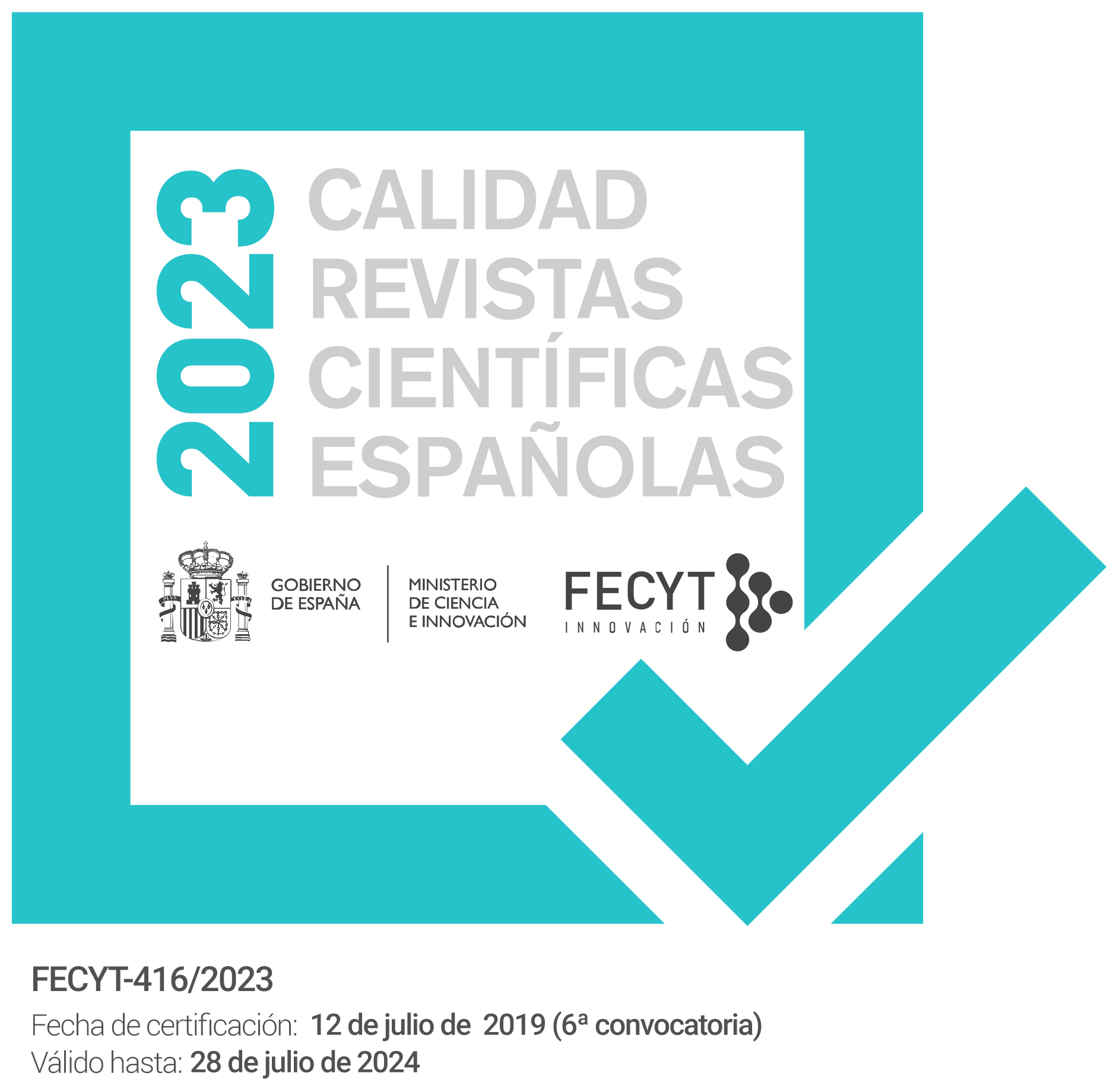Apocalípticos y desintegrados. El final del mundo en el cine de las últimas cuatro décadas / Apocalyptic and Disintegrated. The End of the World in the Cinema of the Last Four Decades
Keywords:
Cine, Apocalipsis, Milenarismo, Sociedad del malestar, Tardocapitalismo, Cinema, Apocalypse, Millenarianism, Society of Malaise, Late CapitalismAbstract
Uno de los temas más trabajados por el género fantástico en las cuatro últimas décadas escenifica la posible destrucción del planeta Tierra por razones muy diversas, como bombas atómicas, impactos de meteoritos o misteriosas profecías. El cine fantástico imaginó estos panoramas describiendo un final de los tiempos en tal número que incluso forman un subgénero. Algunas películas del arco temporal de esas cuatro décadas servirán para ilustrar dicho planteamiento, como Armageddon, El día de mañana, Señales del futuro, El núcleo o La carretera. El malestar cultural de la sociedad tardocapitalista se antoja terreno abonado para este tipo de pesadillas colectivas.
One of the most common topics in the fantasy genre over the last four decades has been the destruction of the Earth, caused by various things such as atomic bombs, meteorite impacts or mysterious prophecies. Fantasy films have envisioned the end of time so often that they have even become their own subgenre. This can be illustrated in films from the last four decades, such as Armageddon, The Day After Tomorrow, Knowing, The Core or The Road. The cultural malaise of late capitalist society appears to be a breeding ground for this kind of collective nightmare.
Downloads
References
Argullol, R. (2007): El fin del mundo como obra de arte: un relato occidental, Acantilado, Barcelona.
Balló, J.; Pérez, X. (2010): La semilla inmortal. Los argumentos universales en el cine, Anagrama, Barcelona.
Barkun, M. (2003): A Culture of Conspiracy. Apocalyptic Visions in Contemporary America, University of California Press, Berkeley.
Deleuze, G. (2003): La imagen-movimiento. Estudios sobre cine 1, Paidós, Barcelona.
Duque, F. (2000): Filosofía para el fin de los tiempos, Akal, Madrid.
Fernández Porta, E. (2008): Homo Sampler. Tiempo y consumo en la Era Afterpop, Anagrama, Barcelona.
Fisher, M. (2009): Capitalist Realism: Is there no alternative?, Zero Books, Ropley.
Iaccino. J. F. (1998): Jungian Reflections within the Cinema. A Psychological Análisis of Sci-Fi and Fantasy Archetypes, Praeger, Westport.
King, G. (2000): Spectacular Narratives. Hollywood in the Age of the Blockbuster, I. B. Tauris Publishers, LOndon-New York.
Kuhn, A. (1992): «Introduction: Cultural Theory and Science Fiction Cinema», en A. Kuhn (ed.), Alien Zone. Cultural Theory and Contemporary Science Fiction Cinema, Verso, London-New York: 1-12.
Marcos Arza, M. (2004): Tim Burton, Cátedra, Madrid.
Miller, T. et al. (2005): El nuevo Hollywood. Del imperialismo cultural a las leyes del marketing, Paidós, Barcelona.
Morales, M. (1980): Milenarismo. Mito y realidad del fin de los tiempos, Gedisa, Barcelona.
Phillips, K. R. (2005): Projected fears: Horror films and American Culture, Praeger, Westport.
Rodríguez, A. (2012): ¡Apocalipsis pop! El cine de las sociedades del malestar, Notorius, Madrid.
Sontag, S. (1996): «La imaginación del desastre», en Contra la interpretación, Alfaguara, Madrid: 274-295.
Telotte, J. P. (2002): El cine de ciencia ficción, Cambridge University Press, Madrid.
Veiga, F.(2009): El desequilibrio como orden. Una historia de la posguerra fría. 1990-2008, Alianza, Madrid.
Wagar, W. W. (1982): Terminal Visions. The Literature of Last Things, Indiana University Press, Bloomington.
Zizek, S. (2006): Mirando al sesgo, Paidós, Barcelona.
Downloads
Issue
Section
License
The articles are open access distributed under the terms of the Creative Commons Attribution-NonCommercial-NoDerivatives (CC BY-NC-ND) Spain 4.0 license. Authors who publish in this journal agree with the following terms:
a) Authors retain the copyright and guarantee the journal the right to be the first publication of the work as well as licensed under a Creative Commons Attribution License that allows others to share the work with a recognition of the authorship of the work and the Initial publication in this magazine.
b) Authors may separately establish additional agreements for the non-exclusive distribution of the version of the work published in the journal (for example, place it in an institutional repository or publish it in a book), with recognition of its initial publication in this magazine.
c) Authors are allowed and encouraged to disseminate their work electronically (for example, in institutional repositories or on their own website) before and during the submission process, as it may result in productive exchanges, as well as a earliest and largest citation of published works (See The Effect of Open Access).



